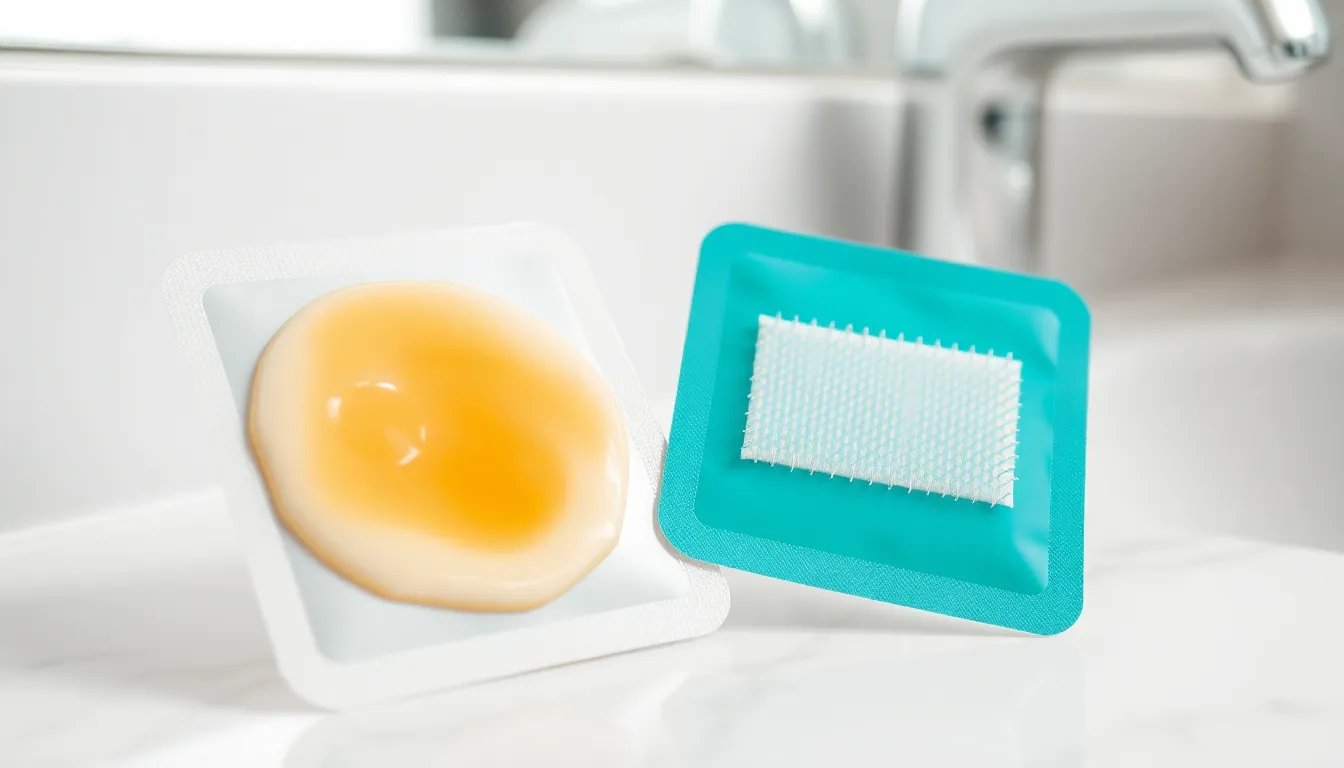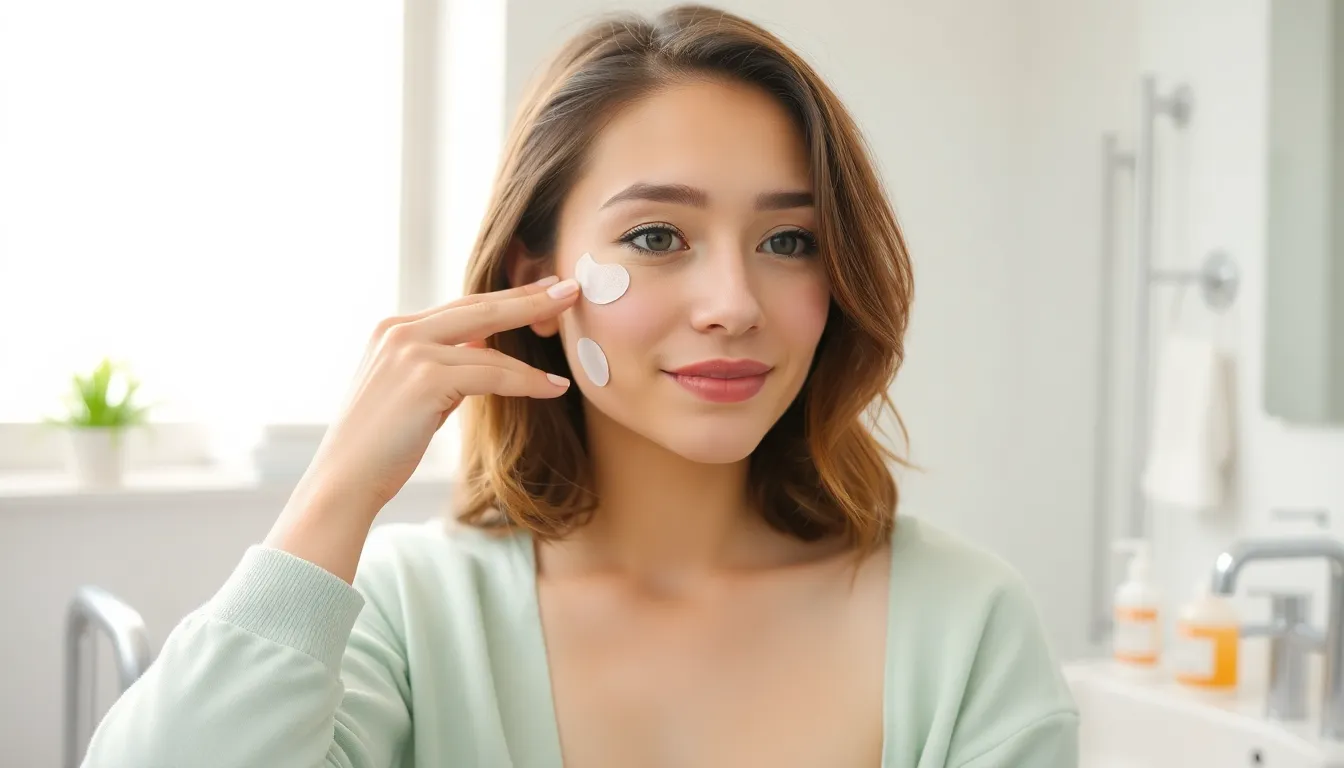In a world where breakouts can feel like personal attacks, pimple patches swoop in like superheroes for your skin. These tiny, adhesive wonders promise to tackle pesky pimples overnight, turning your skin woes into distant memories. Who wouldn’t want to wake up with clearer skin and a little less drama?
Table of Contents
ToggleOverview of Pimple Patches
Pimple patches serve as targeted treatments for acne. These small, adhesive patches often contain active ingredients like salicylic acid, tea tree oil, or hyaluronic acid. They work by adhering to the skin and creating a barrier over the blemish, which aids in minimizing inflammation.
Individuals typically use these patches overnight, allowing time for the ingredients to penetrate the skin. Once applied, pimple patches absorb excess moisture and pus, helping to reduce the size of the pimple. Studies indicate that using these patches consistently can lead to clearer skin in days.
Different types of patches are available, tailored for specific skin concerns. For instance, some patches focus on hydration and healing, while others target oil control and breakout prevention. Choosing the right patch can enhance effectiveness and cater to unique skin types.
Application is straightforward. Clean the affected area, place the patch directly on the pimple, and leave it on for six to eight hours. Users often notice significant improvement after a single use, though some may benefit from repeated applications over several days.
Pimple patches also provide the advantage of reducing the temptation to pop or pick at blemishes, an action that can lead to scarring or infection. Their visibility varies, with some patches designed to be discreet enough for daytime wear.
Incorporating pimple patches into a skincare routine can offer various benefits for those struggling with acne. These products not only treat existing pimples but also support overall skin health.
Types of Pimple Patches

Pimple patches come in various types, each designed to target specific skin issues effectively.
Hydrocolloid Patches
Hydrocolloid patches excel in absorbing excess moisture and drawing out impurities from pimples. Made from a gel-like substance, they create a moist environment that promotes healing while protecting blemishes from external irritants. These patches work best for inflamed spots and are commonly used overnight to achieve optimal results. Users often appreciate their ability to flatten pimples and reduce redness by morning. With consistent application, hydrocolloid patches can significantly enhance the healing process of acne-prone skin.
Microneedle Patches
Microneedle patches feature tiny needles that penetrate the skin’s surface, delivering active ingredients directly into the affected area. These patches often contain potent elements such as salicylic acid or peptides, targeting deeper layers of the skin for improved efficacy. Their design allows for quick absorption, addressing the underlying causes of breakouts. Users experience faster results, with many reporting visible improvement within hours. Microneedle patches serve as an advanced solution for stubborn acne, making them an excellent choice for those seeking rapid relief.
Benefits of Using Pimple Patches
Pimple patches offer several advantages for treating acne effectively. Their targeted approach supports clearer skin and promotes faster healing.
Quick Healing
Quick healing is one of the standout benefits of pimple patches. They create a protective barrier, preventing bacteria from entering blemishes while absorbing irritants. With active ingredients like salicylic acid, these patches help unclog pores and reduce pimple size. Users often notice visible improvement within hours of application, making them ideal for sudden breakouts. Overnight use can lead to significant reduction in redness and swelling by morning. Consistent application accelerates the healing process, encouraging skin to recover more quickly.
Reduced Inflammation
Reduced inflammation plays a crucial role in the effectiveness of pimple patches. They contain soothing ingredients that calm irritated skin, leading to decreased redness. By drawing out excess moisture and pus, patches minimize swelling and discomfort associated with inflamed pimples. Many users report feeling less pressure and pain, allowing for a more comfortable skin experience. The patches provide a targeted treatment approach, focusing on specific blemishes rather than affecting surrounding skin. Regular use maintains a clearer complexion by addressing inflammation at its source.
How to Use Pimple Patches Effectively
Pimple patches offer simple yet effective solutions for managing breakouts. Using them correctly ensures optimal results.
Application Tips
Cleanse the affected area before applying a pimple patch. Dry skin enhances adhesion and allows the patch to stick effectively. Align the patch directly over the blemish, ensuring full coverage. Press down gently to secure it in place, allowing the ingredients to penetrate the skin. Avoid touching or moving the patch once applied; this helps maintain its effectiveness. Check the manufacturer’s instructions for specific application times, as some patches may require longer wear.
When to Apply
Apply pimple patches at night for the best results. Overnight use allows the patches to work while the skin repairs itself. The effectiveness of the patches becomes more apparent by morning, as they minimize redness and inflammation. For daytime application, choose discreet options that blend seamlessly with the skin. Ensure the patch is applied on cleansed and dry skin for optimal results. Regular use is essential, as consistency contributes to clearer skin over time.
Potential Drawbacks of Pimple Patches
Pimple patches offer benefits, but they also come with potential drawbacks. Understanding these limitations helps users make informed decisions.
Skin Reactions
Skin reactions can occur with pimple patches, especially for those with sensitive skin. Redness and irritation sometimes develop around the patch area. Allergic reactions to ingredients, like adhesives or active components, happen in some cases. Users should monitor their skin closely for any adverse effects during use. Testing the patch on a small skin area 24 hours prior also provides insight into tolerance.
Limitations
Limitations exist in the effectiveness of pimple patches. They work best on early-stage pimples or whiteheads, leaving cystic acne less responsive. Coverage limitations mean large breakouts can’t be treated effectively with a single patch. Regular patch use may lead to dependency for some individuals, delaying exploration of broader skincare solutions. The patches provide temporary relief, yet they won’t address the underlying causes of acne.
Pimple patches offer a practical and effective solution for managing breakouts. Their targeted approach not only aids in quick healing but also helps users avoid the temptation to pick at blemishes. With various types available, individuals can choose patches that best suit their skin concerns. While they provide fast relief and visible improvements, it’s essential to remember their limitations and potential skin reactions. Incorporating pimple patches into a skincare routine can enhance overall skin health, but users should remain mindful of their skin’s unique needs and explore comprehensive treatments for long-term results.



